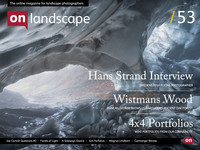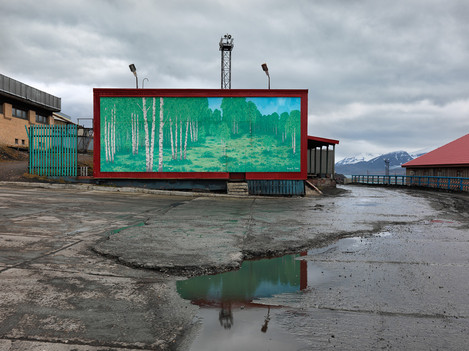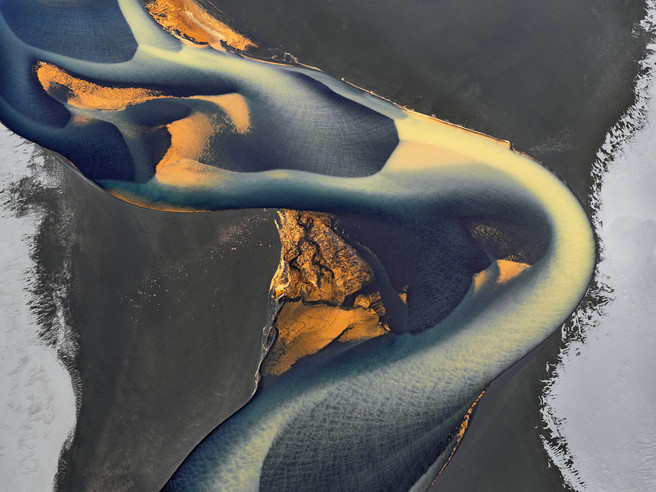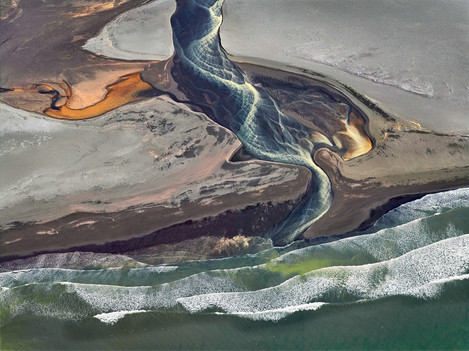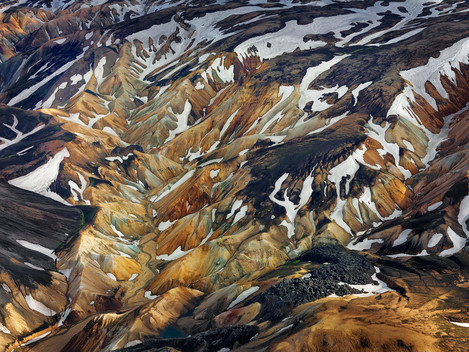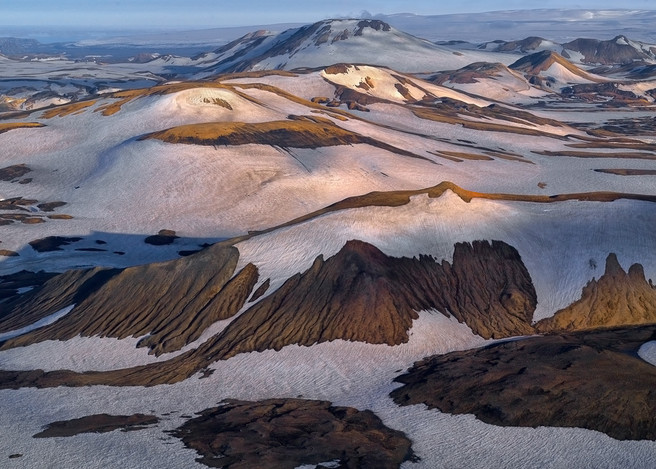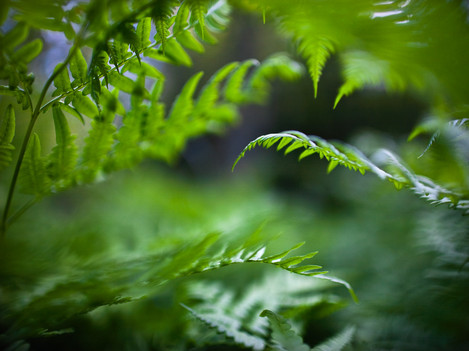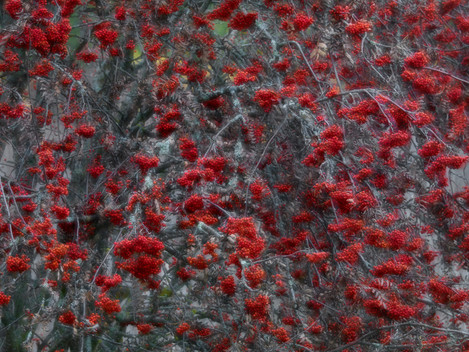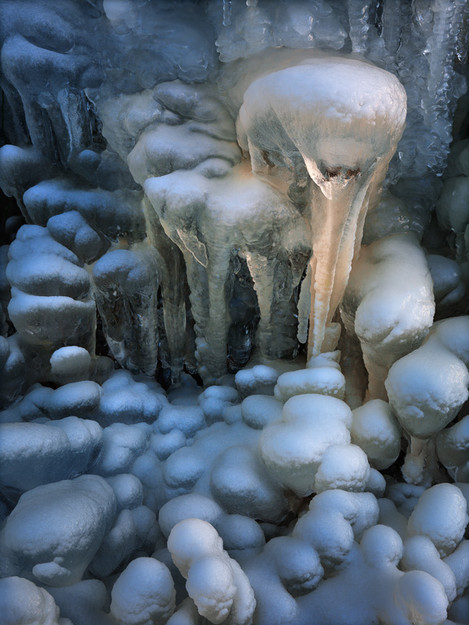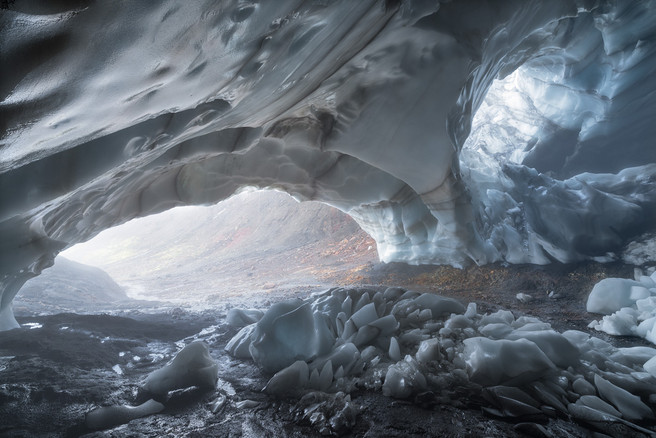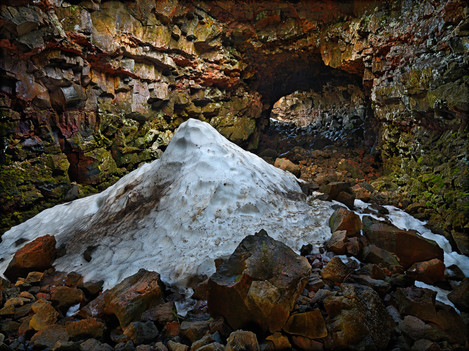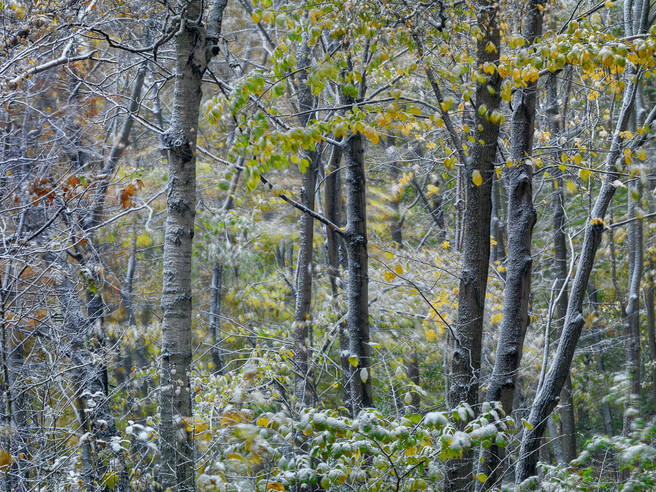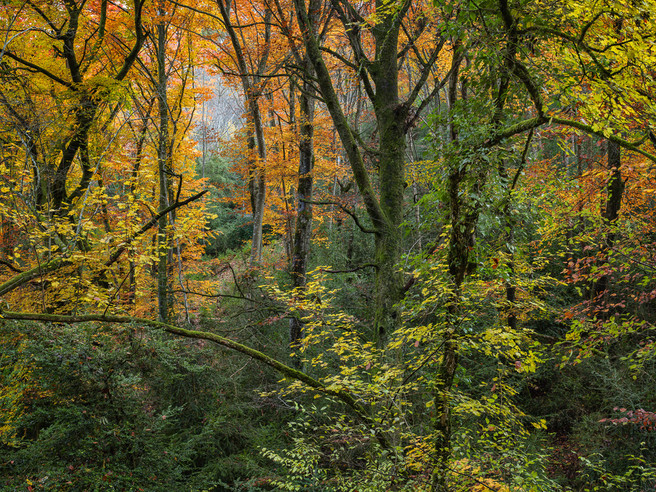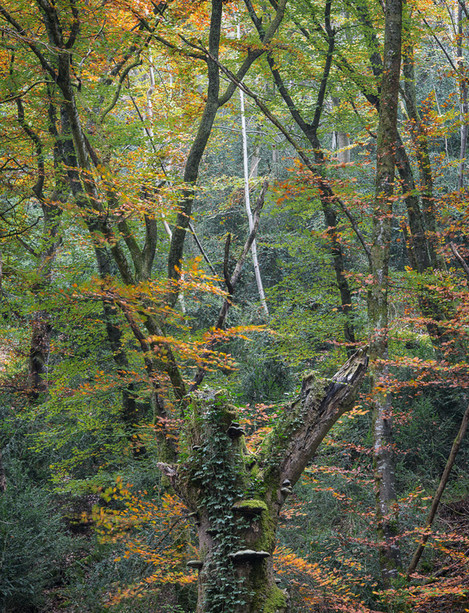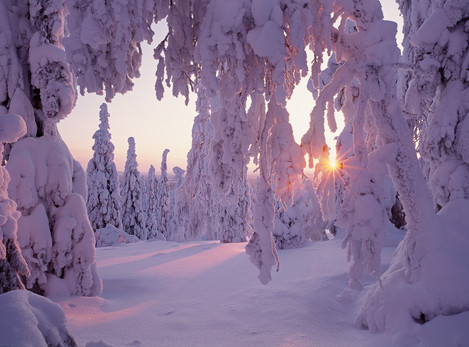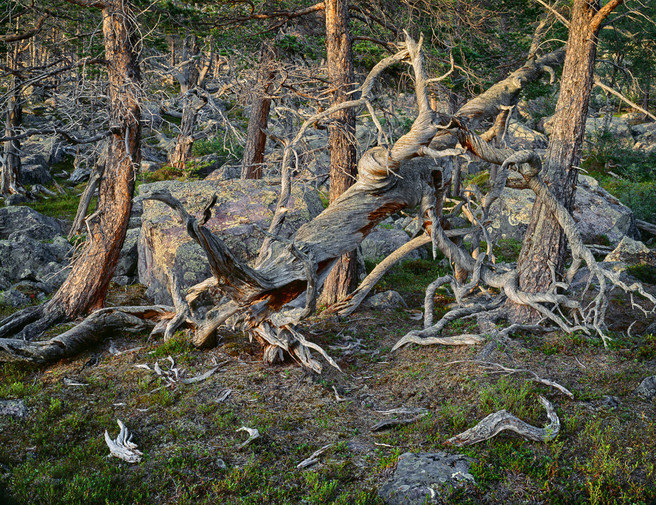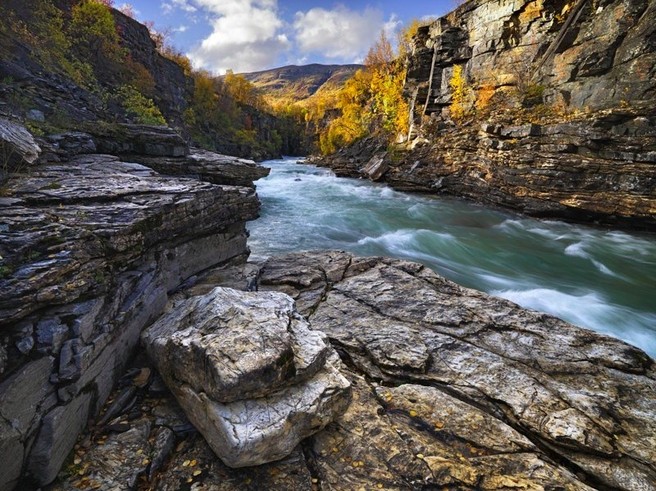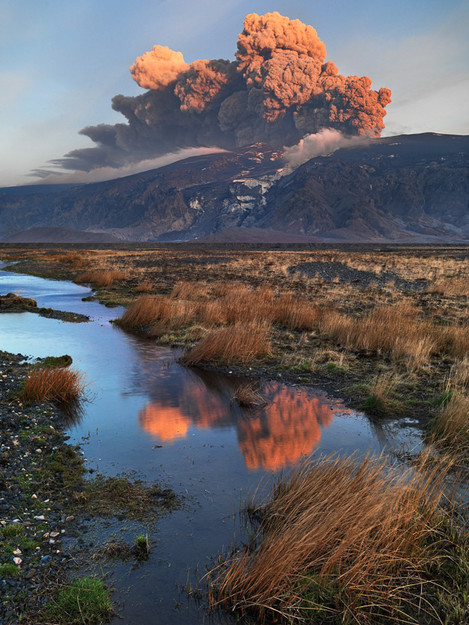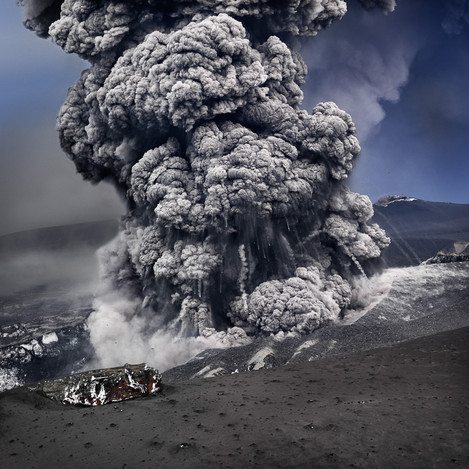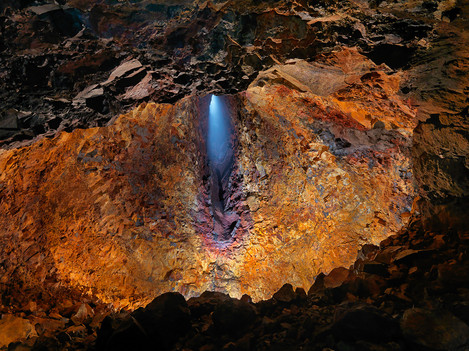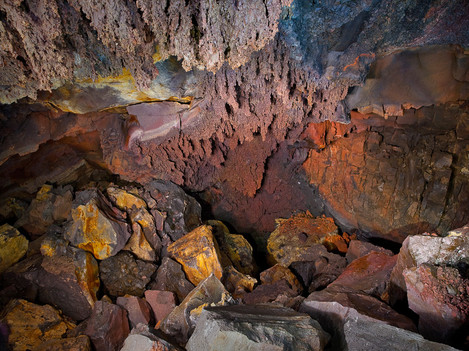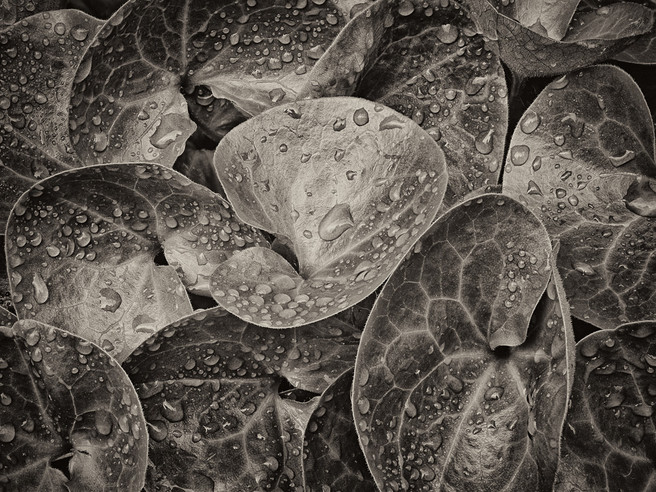Readers Questions & Photo Discussion

Tim Parkin
Amateur Photographer who plays with big cameras and film when in between digital photographs.

Hans Strand
Hans Strand is an internationally recognised photographer who has received numerous awards for his work and published three books. He lives near Stockholm in Sweden.
Here we have part two of our Hans Strand interview where we ask him some questions submitted by our readers and also talk to him about a selection of images. Hans talks about his books, preference for black and white, working in cold weather, compares the D800 and Hasselblad digital and much more...
Tim: We’re here with On Landscape again, with some questions for Hans Strand. Hello Hans. First question from Paul Morton, who asks if you are getting any of your books back into print like Den Åttonde Dagen or the 8th day?
Hans: I have no idea, I know that the publisher of Den Åttonde Dagen and he had some plans of making an English edition of it, but there is nothing in the pipeline for the moment
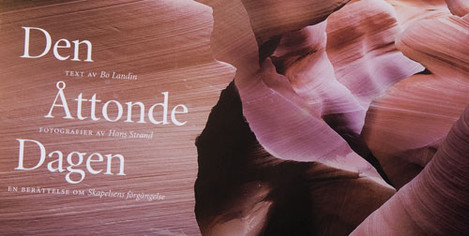 Tim: Ok, a question from Liz Shepherd: Do you have a preference for intimate landscape or for grander views?
Tim: Ok, a question from Liz Shepherd: Do you have a preference for intimate landscape or for grander views?
Hans: Yes I think so, I think there is more about complexity and poetry with intimate landscapes and I find that more of a challenge intellectually, whereas the grander landscapes are more easier to read and of course it can be more impressive, but from an intellectual point of view, I think the classic concept order from chaos is more interesting
Tim: So do you find it more of a challenge for the intimate landscape then?
Hans: Yeah, they are both a challenge, but also more, I am more passionate about that I mean with iconic grand landscapes, you can easily become like a competition, who is shooting it in the most impressive light and it’s more a matter of being at the right place at the right moment, whereas with the intimate landscapes, you're not that dependant on perfect light, you know, you can shoot in overcast conditions and you can have plenty of time to find the right, the best composition
Tim: Is a lot of your photography pre-planned or is a lot of it synchronicity, making the most of what you have wherever you are?
Hans: Yeah, it’s both, I plan for the grand landscape, for the light you know? I try to be at the location before sunrise and find a good position for a great landscape shot, but quite often I end up shooting a small landscape around my feet in complete shadow or overcast conditions and yeah, it’s a, I used to say I, it’s like a slot machine, you know, in Las Vegas these slot machines, you go out and you anticipate, you plan for 3 cherries in a row but you end up getting 3 melons. You know the head should be working all the time, thinking about the different possibilities to make pictures, I think that the ideal situation and you should not be too rigid in your mind, "if I don’t get mist I can’t take a picture" and if even in harsh light, harsh light the good pictures can be made even though it might be more difficult
Tim: I think it was a general said have a plan but adapt instantly
Hans: Yeah, yeah sure
Tim: The next question is from Michael Stirling-Aird, I know you covered a little bit about this before, but it’s about the D800 versus media format, not many people out there that have both cameras to compare so it’s about not which is better than the other but where does the advantages lie with each camera and where the differences are
Hans: Of course the D800 is a more rugged camera, better adapted for cold temperatures I think, although I haven’t had any real problems with my Hasselblad in -30 degrees, it still worked but it takes a lot of power, you know, you need probably 4 or 5 extra batteries when you are out in really cold conditions. Also in humidity, I find the Hasselblad camera quite sensitive, so yeah it’s more, I think that the D800 is more reliable camera for nature photographers and the quality is extremely good, you have the microstructure of the media format which you didn’t have with, when I was using my Canon before, it was when I looked at the pictures in 100% on the screen, it was like just a blur and it didn’t look like a photograph, it looked like it was painted, if you saw the foliage with the individual leaves, they were like they were like they were painted instead of photographed
Tim: Was that the 5D Mark II?
Hans: Yes 5D Mark II and now you can see every single graduation of every single leaf, you know, so it’s a revolution in that sense and if you stitch, I think you’re getting pretty close to media format quality, maybe not quite the colour rendition
Tim: I was going to ask about colour, it’s something I’m interested in at the moment, so how do you compare the colour, have you shot side by side to see or what are your opinions from what you’ve done so far?
Hans: I think the colour seems to be a little flatter with Nikon, it doesn’t have the feeling of volume as you have with media format and it’s much easier to correct the colours if you want to change them a little bit, it responds, it’s like they are more elastic. It’s the files, you can you can bend them and bend them whatever you like and they respond with media format whereas with, I've noticed that with the Nikon they tend to be turned grainy quite fast if you try to do something with the contrast. I try to apply Viveza to local contrast enhancement and when you apply that on a Nikon file they turn grainy quite fast
Tim: Even at the very low ISOs?
Hans: Yeah, yeah, even at the 100 ISO, it doesn't matter especially on skies, I noticed that when I was in Svalbard in September and I tried to enhance the texture of the clouds a little bit by using Viveza but it just got grainy
Tim: Do you use graduated filters on the D800 as well?
Hans: I never ever use any filters because I think the advantage of using a digital technique is that if you want to have a, you want to even out the contrast in sky between the foreground and the background, you can easily take an extra exposure -2 and then you blend them together in Photoshop with much more accuracy than you can get with a graduated filter because that tends to bleed into treetops and to cliffs and mountain peaks etc where you don’t want it to have any effect, right, so I do that in the post processing
Tim: And is the same, does the same theory go for the focus blending as well, do you focus blend?
Hans: Yeah, I quite often do three focus points. I found f/11 is really powerful, sharpness tends to drop a little bit at f16 and definitely at f22. Of course you can re-sharpen it in Photoshop, but, yeah I prefer to have it razor sharp from the beginning
Tim: .. and Michael Stirling Aird also asked which photographers inspire you, which books do you buy etc?
Hans: Actually it’s not only nature and landscape photographers; If I should mention one photographer that I think is the number one is Henri Cartier-Bresson, I think he is just gorgeous and you can look at every single photograph by him and you can see perfect composition and yeah it’s very, very impressive. Let’s see, in the landscape photography, today I would say Charles Cramer, I like his work a lot, just because he is not shooting the traditional iconic landscapes of North America. He has found even though he goes to Yosemite or whatever he take his pictures, he finds his own compositions in the landscape and I like Vincent Munier from France, I think he is quite, quite special in his way of making pictures, it’s very poetic and I get a lot of inspirations from my Scandinavian colleagues as well, here in Sweden and Norway. What shall I say more, unfortunately I am not so updated on British photographers, for some reason we haven’t seen much of their work over here in Sweden and I think it's the other way round, you haven’t seen so much of Scandinavian work in Great Britain either
Tim: Not at all, I should probably try and find out more.....
Hans: Time we remove these barriers
Tim: Yes it would be great to get a little list of who you think are doing good work in Scandinavia
Hans: Yes to mention one more, who is also a good friend of mine, is Chris Bell from Tasmania, I think his work is quite outstanding
Tim: Yes, we interviewed him recently
Hans: I really like his latest book on the Tarkine Wilderness, yeah, that’s gorgeous, yeah
Tim: Joao Maia: After looking at your stunning images of Iceland from the air, I wanted to ask you what were the main challenges that you found, shooting from an aeroplane and how do you adapt your composition approach?
Hans: The challenges are first I have a physical challenge, I tend to get airsick quite easily so I absolutely need to have some medical treatment so I use a plaster behind the ear called scopoderm which contains scopolamine which is kind of drug which prevents me from getting airsick and then from a shooting point of view, you have to think the opposite way from ground level photography, actually the best conditions is clear blue skies, I mean no clouds, you need as much light as possible. This to improve the performance of the camera because you can't shoot at low shutter speed and you don’t want to shoot wide open either because the lenses tend to be softer, so its, I have to, I use 200 ISO and I put my camera on shutter priority at 1/800th of a second.
Tim: Is this the Hasselblad?
Hans: The Hasselblad and then I generally get f/4 and f/5.6 on the aperture and I would say 98% of my shooting is with standard 80mm lenses because it's a very, very good lens, it performs very well even quite good at f/2.8 but at f/44 its razor sharp and then I zoom with the altitude of the aeroplane. I tell the pilot to fly lower or higher, and then of course it’s, you have to be very quick with your compositions, it’s like shooting clay pigeons and you have to very accurate with your instructions to the pilot and that takes a while, especially if you have a new pilot and I tend to have different pilots every time I fly so it takes a while, to start with it can seem to be a completely impossible if you have a pilot who doesn’t understand what you’re up to.
But it’s like I have never been, I have never ridden a horse but I think it’s like similar to ride a horse compared to the conduct the pilot, you have to really be, think loud and explain to him what you want to accomplish but, and you know positioning of the aeroplane is very, very important and if you see something on the ground, you cannot fly right on top of it, you have to fly to the left of it and then make a right turn and then you make a 360 over the object
Tim: And you normally shoot from aircraft instead of helicopters?
Hans: Yes, I can’t afford flying helicopters, it costs about 6 to 8 times more, you know, it’s like shooting from a tripod, shooting from a helicopter, it’s a piece of cake compared to, but on the other hand I think when I shoot from an aeroplane, you see more things that you, that you, and you get more opportunities than shooting from a helicopter because you’re all over the place when you fly with an aeroplane you make your 360s and whether you want or not you end up doing a 360 and you might see your object from an angle you hadn’t thought of from the beginning, whereas with a helicopter you fly from A to B to C to D etc.
Tim: Do you shoot wide then, presuming you’re going to crop a little bit?
Hans: No, no, I should, I very, very seldom do any cropping I shoot with the 80 and try to frame it the way I want, I would say I don’t think any of my aerials are cropped at all on my website, not at all
Tim: We’ve got a question from Magnus Lindbom
Hans: He’s a good friend of mine
Tim: He asked me what your favourite wine is?
Hans: Ah, ok, difficult question
Tim: a quick answer for that one
Hans: It would be Chambertin from Armand Rousseau
Tim: Excellent (I think). I’ve got a quick couple of questions, the first one is, your working practice when you're in the field when finding pictures, you mentioned that you tend to plan bigger than the grand views, do you go back to places regularly or do you like to go to new places every time and when you’re out working in the field, how do you find the picture, do you use the camera all the time or do you work with a composing frame or just wander, looking with your eye?
Hans: I just wander looking with my eye I think and I quite often return the same places over and over again I have, I think, like every photographer I have a bunch of favourite spots and I live in Stockholm, I don’t have very many favourite spots here but I have a few, I have like a swamp forest just south of Stockholm and I go there probably 10 times per year to see the changes because a lot things are happening there, the trees are falling down and its sometimes more or less flooded and there are ferns coming up and decaying and the frost and stuff its quite an interesting place. It’s not that you earn a lot of money on places like this, it’s for the soul
Tim: OK, I’d like to go through a few pictures if that’s ok, one of the first ones that stuck out is a picture of Svalbard mining town and it's, if I send you a link to it so you know which picture I’m talking about, it’s not what you would think of as a typical landscape photographer’s photograph, its more documentary in nature
Hans: Actually I don’t see myself as an absolute nature photographer, I see myself as a photographer in general, so I get a kick out of places like this, the complexity and specially here, you know, where things are rusting and decaying in this harsh arctic environment, I think it’s just fantastic to see all the machinery rusting you know and getting, you know gradually it becomes in one with nature, you know, it erodes like any natural object like rocks and the ozone, they don’t live a lot forever, they erode into sand and here you see the process.
Not a single tree is growing on Svarlbad right, it’s a permafrost tundra all the time, it’s like how you say like a reminder for the people who work there that there is a world existing where trees are growing somewhere, where they come from came from of course, they basically came from Russia and Ukraine, so it’s like a postcard from home and it’s a big, big board on the main square there, it’s probably 15 meters long and like 4m high
Tim: And were you either on a commission, or I mean presumably, had you not gone on a documentary?
Hans: This was during a workshop here last year in August and we took the clients to tthese two mining towns, and I had never been there before but I heard good things about them and it’s like the perfect set for a Stanley Kubrick movie. Yeah it would be a great place for him to shoot a movie, you know, this place if you go especially if you go the pyramid which was sold to the Russians in 1928 from Swedes, it was ran by a Russian mining company until '98 and today it’s just an empty ghost town
Tim: Yes, what do you think of Svalbard?
Hans: It’s fantastic, very challenging I mean the light is, the weather is not very stable, you know? This year we had pretty miserable conditions all the time we never had really perfect conditions, but still that’s also part of Svalbard, so it’s important to take pictures of overcast and bad weather as well as good weather you know
Tim: Yes, that’s one of next questions which was this, about a couple of pictures, because somebody asked about an aerial photograph on Facebook. Here's the image and the one below is a wider view of a similar location.
Hans: its 2007, my first flight with a Hasselblad camera, I was flying the year before with a phase 1 P30 but this was the first time with 39 megapixel cameras and this is shot from about 400m altitude, they into feet, but let’s say what is that, 1200 feet from a Cessna 170 Skyhawk, and this one of the rivers that enters the Atlantic Ocean on the south coast at Landeyarsandur is the name of the stretch of sand, and probably five rivers or so are entering the Atlantic here and this is one of the most spectacular ones and you can see that the river is stained by silt from a glacier, you see parts of the river is kind of milky and that, that, that silt has also picked up iron oxide which is extracted from the volcanic soil
Tim: These are the oranges and reds then
Hans: Oranges and reds, and iron oxide, that’s the same as rust you know, and the rivers are sometimes they can be everything from slightly off white until they can even be like you see here in the left branch you can see its even orange
Tim: Yes, I think this is what people were asking
Hans: It can also become screaming red you know so, quite interesting
Tim: Yes
Tim: Well the link after is the river bend link and people were asking what it was? It’s the explanation of the colours and its alien to see colours like that
Hans: River Arch, It’s shot from about the same altitude 1200 feet and it’s also one of the rivers, not the same river as the one before but it’s a glacier river containing silt and that’s the yellow part of the river and you see the riverbanks where the iron oxide has sedimented and that is the orange part, and the river is flowing from the top to the bottom in this picture
Tim: And presumably the white areas either side are snow?
Hans: No, no, no, it’s volcanic sand
Tim: Looking through your aerial pictures I really like the abstract images
Hans: I don’t want to have actually any human objects in them to compare the size, I want the pictures to be a little bit abstract and I like to puzzle people. To put to put some dimensions on this, I would say about 4-500 metres across
Tim: Yes, large rivers then.
Hans: Yeah
Tim: Let me go to the next ones, these are presumably on similar trips, I'm just going to send you another link, the is Landmannalaugar and it’s the incredible painted hills where you get bits of snow on the hills and like you say the iron oxide providing incredible colours
Hans: Yeah, and also mineral called rhyolite, and it’s gorgeous place, quite accessible, you can go there by, I think you can go by regular car if you don’t go all the way, and then the last part, last 100m into Landmannalaugar as its pronounced, you walk by foot and then you hike into this area, it takes about 35-40 minutes to walk from the camp ground to where this is. This shot right over a mountain called Brennisteinsalda, and it’s in the central of Landmannalaugar, and this is in early July so it’s quite a lot of snow left. If you go here in August, there won’t be this much snow, very little snow actually
Tim: Is this, is that in the centre of Iceland then?
Hans: It’s in the south centre, it’s about 65km from the south coast inland
Tim: Yeah, well I’m just sending a link to a next picture which is Torfajökull
Hans: Yeah, Torfajökull, yeah
Tim: .....which has this similar snowy textures, it’s like, I presume it’s like a perma snow, where you’ve got very strong black outlines to the snow, it forms very graphic pictures
Hans: This is more how you say like not as like an abstract shot like the other ones, so this is also shot in early July, there’s quite a lot of snow left and the landscape changes as I told you, if you go in August, it won’t look like this, but you will see more of the glaciers, whereas the snow fields will disappear, they will melt away but the glaciers will be more visible and the patterns of the glaciers will be visible, and all the glaciers you see like annual rings from ashes, from the downfall from volcanic eruptions. If you look at , I have a few other pictures shot from Vatnajökull and from Breiðamerkurjökull where you can see this annual rings or annual patterns
Hans: Yeah, it’s quite funny story behind this, this is right where I have my summer house and this shot was a Canon 35mm camera at a 35 f/1.4 wide open and I was walking in from my summer house to where my mother lives, just 3km away on a small dirt road, and I just stuck the camera into these ferns without looking in the viewfinder and I took some pictures and gosh, I think that was a pretty good method, and I got quite a few interesting shots which I would never have shot while looking through the viewfinder
Tim: There’s beautiful separation in there for a guess shot
Hans: This was pure random
Tim: Yeah, and in terms of, would you try and shoot photographs like that with the Hasselblad?
Hans: You won’t get this type of feeling because it doesn’t have the fast lenses, this is a f/1.4 35mm and I tried to do it with a 50mm on Hasselblad but that’s an f/4 and you don’t get this shallow depth of feel
Tim: And there aren’t any really fast lenses
Hans: No they create a totally different impression
Tim: So really that’d be a job for a Nikon again
Hans: Yeah I have an f/1.4 now, Carl Zeiss so I can do that 35mm f/1.4 so I could do these images with a higher technical performance than with the Canon. So random photography is what I practice
Tim: Well that quite impressive I have to say, there’s obviously an instinct going into there that you know what might work still
Hans: Hmm
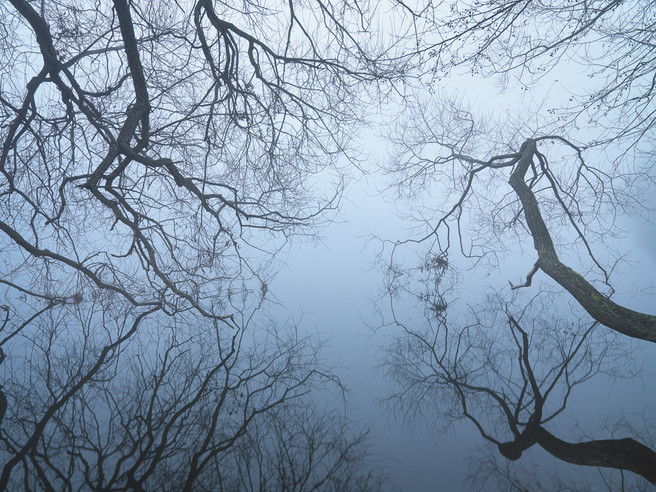 Tim: The next picture is one I particularly like, which is late autumn mist in Trekanten, Hägersten.
Tim: The next picture is one I particularly like, which is late autumn mist in Trekanten, Hägersten.
Hans: That is where I live exactly, it’s a suburb just 15 minutes outside Stockholm and there is a little lake there called Trekanten called 3 corners and when it’s clear, you will see houses in these pictures in the background. Here it was very, very misty so the trees, the willow trees I think they were, they are leaning out over the water and you can’t see any further than 10m away you know
Tim: So would you, do you go out regularly in your local area with your camera just to ... ?
Hans: Yes, in this place I have shot quite a few pictures when it’s been misty and when the fresh snow, the first snow had come and it’s quite a nice place and it’s not really wild, you have a lot of jogging paths etc around this lake but still it’s beautiful
Tim: Mist is a good camouflage
Hans: I like that a lot, one of the weaknesses of photography is that you have too much information sometimes and by using [mist] you reduce the photographs to more like a painting
Tim: ... and talking about the sort of painting effect, this is a, I’ve just sent you a link to a rowan tree in Hibo, Hälsingland.
Hans: Also nearby my summer house
Tim: Very intrigued as to the effect here as its got a real sense of motion to it
Hans: Yes this is a, it’s a how shall I say it, a sandwich, I took one shot exposure where the berries are focused and then I focused out
Tim: Ok, yes
Hans: Blurred the image, shot wide open, not to get any depth of feel and then I made a like a, put them together as two layers and used about 50% opacity and then the blurred berries will create like a glow around the other ones
Tim: Yes, I’m not, there’s, I can’t remember, is it the Beth Orton effect, I'm not a big fan of that
Hans: I’m not practising this
Tim: No, this looks a lot better. I believe, trying to remember the name now, Sandra Bartocha? I believe it is, she’s regularly in the Wildlife Photographer of the Year, taking pictures of very low depth of field plants and flowers and I believe she uses a similar technique of sandwiching, it’s very, very effective, its beautiful
Hans: Yeah, it works sometimes
Tim: I wanted to ask about these images, these are from Södermanland and there are two pictures, the first one is a picture of icicles and the second one is, they, a winter forest – these are both from the same location I believe
Hans: the icicles I shot just this December, I was driving down to an interesting, like a coastal reserve that’s about 100k south of Stockholm and on the way there was, the road was, how you say, was cut out through, cut through a mountain, it was you know, what do they call it, yeah it was, what is it, precipice out the wall
Tim: Yes, I know what you mean,
Hans: ... and there was water dripping down, creating these icicles and it was lit up by the setting sun here
Tim: Ah yes,
Hans: The one sticking out
Tim: That’s what gives it the great effect
Hans: The sunlight
Tim: It’s the contrast of the blue and orange
Hans: Yeah, that’s what I like
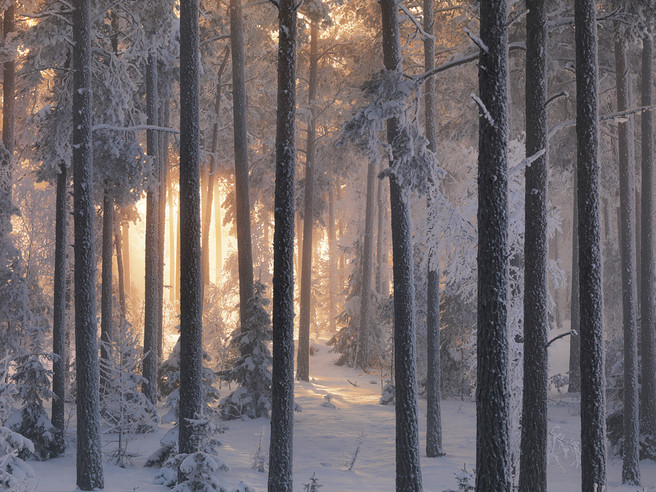 Tim: .... and that goes to the next picture which is the winter forest shot
Tim: .... and that goes to the next picture which is the winter forest shot
Hans: Yeah, that was shot just last week here in Stockholm also about 50-60k south and it was mist, it was -18 Celsius and it was mist, so mist again is fantastic what it can do to a picture ... and you know this time of the year the sun is very low in the sky so it has a very reddish light there
Tim: Is this, would this be a just a scouting trip for you or were you on a job or .... ?
Hans: Just a scouting trip, I just wanted to catch the possibility of doing some good photographs while there was such a fantastic frost
Tim: Now you said you knew the weather conditions .....
Hans: Very, very special, I haven’t seen these conditions in Stockholm at all, ever
Tim: Do you have much problems in the cold, I mean I know you’ve been out in -20C, -30C, does it cause any problems with the cameras?
Hans: Well you get really cold and here I didn’t really take care of myself either, I didn’t even wear a hat, I had very, very thin gloves, actually you can use them for around zero temperature, but here I got really, really cold and got completely numb in my, how you say, trigger finger, I couldn’t feel the shutter, after a while I had to go back to the car and warm up my hands and gosh it hurt when the blood was coming back to my fingers! I mean this was, I was driving a car and found this nearby the road you know, but if I am out for a serious photo trip I will of course dress well so I can be out for a long time, you know, but here I was not properly dressed at all which is why I had the problems
Tim: And do you keep your equipment in the car or anything, to keep it ...?
Hans: I keep it in the car in the trunk and I put it in, and I always put the camera inside the backpack, so it heats up slowly otherwise you get condense problem, if you have a -18 degree camera and take it into a car which is warm you get condense immediately and that’s a problem, you know, just to get it off the lens, off the lens can be quite difficult,
Tim: I see because the car heating, even the boot will warm up [a little] won’t it
Hans: For sure, but if you keep it in the backpack, it heats up slowly
Tim: Yes. You don’t have any problems with cameras malfunctioning in the cold apart from batteries
Hans: No I haven't, not really.
Tim: I’ve sent you a link to another picture, two from Iceland, the first one is a quite an extraordinary ice cave and the second is a lava tube if you can tell us a little bit about the pictures
Hans: The ice cave was shot last year in August and it in a place called Hraftinnusker and it’s of course completely crazy thing to go inside, but I couldn’t resist the temptation, you know. I almost got killed in 1985 in a glacier in Norway, for the same reason, you know, I got seduced by the colours and the light inside and I was inside this glacier shooting for about half an hour and I put my things together in the backpack and as soon as I got the backpack on my back, I started to hear sounds from the glacier and I understood that it was about to fall apart so I ran out as quickly as I could which was about 20m and I can tell you it almost took my Achilles tendon when it fell apart, I would say half a second to 1 second later and I would have been dead, you know
Tim: Did the whole thing fall?
Hans: The whole thing fell apart
Tim: Ouch!
Hans: And it was, you know I had nightmares for many years after that and so I had this in mind when I took these pictures, I put the 15mm on, the Carl Zeiss 15 on the Nikon camera, I just took the camera and the tripod and walked in there and took the pictures during 4, 5 minutes, no more than that and then I
Tim: Ran away
Hans: Ran out again
Tim: So were you on your own on these trips?
Hans: No I have and Icelandic guy with me, I fooled him to get inside as well and he took some pictures also,
Tim: Ha-ha, so when you go, do you hire somebody to take you to interesting locations or? When you have a guide?
Hans: This was not a guide, it was a friend of mine, a good friend of mine, a photographer
Tim: Who knew the location?
Hans: Yes, he is a very good photographer
Tim: And the next one is a lava tube
Hans: Let’s see which one, yeah, you know, where there is a large eruption that lasts for several months, you have a lava stream, it's like a river and it solidifies from the periphery, I mean cools down and becomes solid, whereas the interior of the lava flow still flows, and eventually the eruption stops and this lava stream cease to flow and what remains is like a long, long tube. So this one is 3k long
Tim: Oh wow
Hans: And the roof has caved in at a few places, allowing some light to get in, get in there so, and you can see even the snow has come in from the top
Tim: So hence the pile of snow where it’s come through the hole
Hans: And you see the light in the background tunnel as well, it’s another place where the roof has caved in, I don’t know if this is completely free from risks either you know because there’s a lot of stones (Tim: Yeah) that come down from the roof and
Tim: They look quite old though
Hans: Yeah, they look quite old but if you’re in there and there is an earthquake I think it can be dangerous
Tim: And do they get earthquakes in Iceland?
Hans: Every day, every day, hundreds of earthquakes every day in Iceland
Tim: So if you're in an ice cave, it's particularly dangerous I imagine if there’s an earthquake,
Hans: If there's a big one, most of them are very small about like one on the Richter scale, but if you’re in an ice cave and you get a big one like a 5 or 6 it can get up to 6.2 and then it can be absolutely lethal you know?
Tim: At your own risk I think is the appropriate phrase ..... One of the questions that I wanted to ask you because as I am interested in coming to Scandinavia in the Autumn some time, and it relates to this next pictures
Hans: Also very close from where I live
Tim: It’s a combination of autumnal colour and the cold weather coming in, they overlap
Hans: Yeah and it’s very rare to have autumn colours and snow at the same time, I haven’t shot many times during conditions like these ones. Maybe three, four times in my whole career but this is just where I live and it's in a little forest, a park where Alfred Nobel made his dynamite. His factory was just nearby here and still they have like a museum there today. But here again it was like a snow storm, like a blizzard and everything was moving and being sort of a perfectionist, you know I used media format to get like maximum sharpness and you know that kind of thing, you get disturbed when things are moving but still I have noticed through the years that sometimes its pictures when the branches are moving, they are the ones that are the best pictures because you build in some kind of fragility in the pictures, which can be quite nice in the end
Tim: Moving on to a picture from France I believe, is that correct?
Hans: Yeah, Gevrey-Chambertin. I have a great passion for wine and I go to Burgundy every year to taste wine and to also to photograph vineyards and wineries and just nearby in Gevrey-Chambertin where some of the best wines in the world are made there is nature reserve, fantastic forest and I don’t know the particular trees, I don't know the species here because they are different from Swedish trees, but the forest is very, very nice and this is in the peak of the autumn colours in early November
Tim: So you go every year
Hans: Every year in October, November, I go to Burgundy
Tim: So you’re quite keen on your wine?
Hans: Yeah, yeah
Tim: Have you done work, photography work for vineyards?
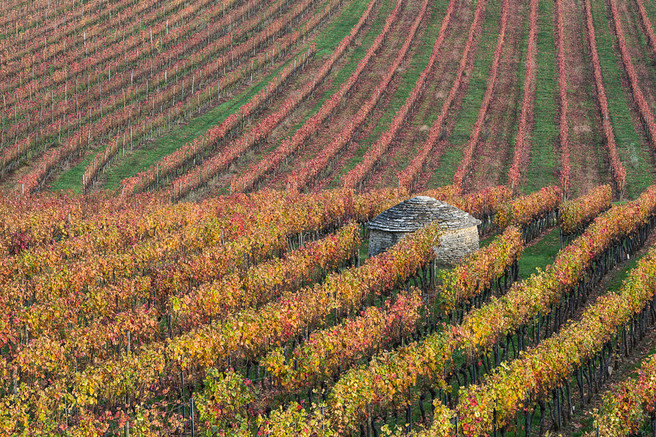 Hans: Yes for about 3 or 4 of them, so its I think its, the vineyards are quite interesting because they are like a cultivated landscape and they are forming very interesting patterns with vines in the rows of vines and interacting with topography in the landscape
Hans: Yes for about 3 or 4 of them, so its I think its, the vineyards are quite interesting because they are like a cultivated landscape and they are forming very interesting patterns with vines in the rows of vines and interacting with topography in the landscape
Tim: Do you have any of this work in websites or?
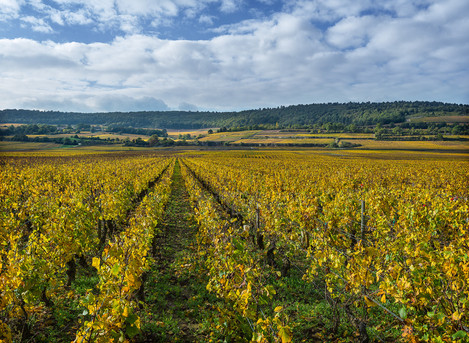 Hans: No I don’t have but I can send you if you want
Hans: No I don’t have but I can send you if you want
Tim: Yeah, I'd be interested in seeing a few pictures ... (included above)
Tim: The next pictures, you don’t mind going through these pictures do you? The next picture is a forest in Finland, snow
Hans: In 1994, I went to a place called Kuusamo in Northern Finland, and it was extreme conditions this year, it was the worst damage to the forest in thirty years, you can see this was not snow this was ice, its humid winds from the arctic ocean, it's only 150k away from the arctic ocean, and when you have northern winds, it blows this humid winds are coming in over the Taiga Forest and its condensing and forming these fantastic ice patches on the trees and of course it’s a gorgeous thing to look at but it’s a disaster for the forest
Tim: Yes
Hans: The trees are getting extremely heavy and they break from the weight of the ice, you know, but this was shot on a mountain call Penikkavaara, I was together with a Finnish photographer named Hannu Hautala, he took me on a snowmobile up there and this was shot on a Linhof Technikardan 69, wonderful camera
Tim: Did you get any problems with film in those temperatures as well?
Hans: Not really
Tim: Fairly robust.
Hans: Yeah, it worked without any problems at all
Tim: One of the fascinating pictures I saw in your collection was a dead pine forest,
Hans: Yes, this tree I've shot many times and the first time I found the tree was probably in 1990 or so and it gradually becomes more and more horizontal for every year that passes, you know, and this must be very, very old pine tree, you see how it’s twisted
Tim: It’s incredible isn’t it yes
Hans: And it’s like a Swedish version of the bristlecone pine trees
Tim: That's what made me think of, I thought it could be American but obviously with the caption not
Hans: No and it's so beautiful how its decaying, it’s wonderful tree and I’ve tried to find this place again but I haven’t been able, the last ten years I’ve been up there many time and I’ve tried to find this tree again but I haven’t found it
Tim: Whereabouts is it?
Hans: It’s in a national park called Stora Sjöfallet it’s in Lapland, up there
Tim: Ok, you shoot in Abisko quite regularly as well, if you were recommending somebody to visit the north for Autumn, is that the sort of place you would recommend?
Hans: Abisko in mid September is a gorgeous place, it’s so convenient to practice your photography there, you stay at the hotel and then you have 100m to the canyon and mountain landscape all around you. It’s extremely accessible, extremely beautiful and you could spend a lifetime up there shooting without taking the same pictures, and the canyon is just marvellous, it's a 3k long, about 30 to 50m deep limestone canyon with a crystal clear river down at the bottom
Tim: Do you have some Abisko pictures on your gallery which ones, where would they be?
Hans: Probably in Grand Landscapes, I’ll see if I can find it – let’s see, just a second
Tim: Oh I’ve found the rivers
Hans: I have some abstract shot of the river flows but I have some pictures where you can see the canyon, let’s see, yeah, on page 8 (see above), in Grand Landscape, the third from the left of Abisko canyon, into the canyon how it looks, and it winds down from the mountain to the lake Torneträsk. It a gorgeous place
Tim: I should ask you about your adventures at a certain volcano which I’ll try and pronounce – Eyjafjallajökull - How did that come about, that must have been quite a snap decision or were you already out there?
Hans: No, I wasn’t there but I tried to get a flight over you know, first I was busy with, you know, this eruption was in two stages. First there was a lava eruption at the location called Fimmvörðuháls which was on the same mountain but further east and it was a beautiful, like a tourist eruption where people took their 4 wheel drives and drove all the way up to the place
Tim: I’ve seen pictures, yes
Hans: ...and they were having barbecue parties, grilling meat and sausages on the lava and it was beautiful and it lasted for almost a month, but I was stuck with my paperwork in my business, you know, tax declaration etc, and I couldn’t get away and when I finally was finished with that, the eruption stopped and I thought, gosh isn’t that typical, and then after two days it started again, but in a much more violent way and this was when you got this ash eruptions on Eyjafjallajökull and it was so powerful, as you know, it stopped the air traffic in the whole of Europe for, it had influence at least in the whole of Europe for a month, and I had to re-book my tickets seven times before I eventually managed to get over there and it took some, I wasn’t able to get there until about 14 days into the eruption and it lasted for a month and when I came there, it took on a new powerful stage, how do you say a phase, where it was more powerful again. It dropped for a while the intensity, but it picked up in power and they didn’t allow to fly helicopters, I wanted to hire a helicopter and get close to the crater etc and it would have been fantastic and I was so, I was really pissed off, because they didn’t allow me to fly and I tried to call all kinds of influential people but it didn’t work out and eventually I found a Norwegian pilot, an Icelandic pilot, his name is Ómar Ragnarsson (Click here for some info on his environmental record), he is an icon in Iceland, he is a comedian, he is an environmentalist, he is a journalist, he is everything
Tim: Right
Hans: ...and he is an incredible pilot and no one has ever crashed as many times as he has (errr... -Ed), and no one has never flown so much either so probably it’s a effect of statistics, but he’s extremely skilled and he took me up in his private airplane and we flew twice over the eruption area, of course we had to be on the, how do you say, we couldn’t fly into the ash plume, we had to stay off the ash plume
Tim: Upwind of it all
Hans: Upwind, yes we were flying back and forth several times and we were as close as maybe 4-500 m from the crater
Tim: Close enough
Hans: ...and he said to me I cannot go any closer now because the volcano is sucking, it was sucking in the aeroplane because it’s shooting up hot air about 3000m up
Tim: So it’s sucking in air all around it
Hans: it was sucking in wind, he was compensating by steering out
Tim: I’ve just sent you three pictures and in the second picture you can see the wind on the, sucking all the ash in
Hans: Yeah sure, and you see the lava bombs coming out, and it was on one of the pictures I was blowing it up in 100% and you can see that these stones they are really red, not in this picture you can’t see but I had some other pictures where you can see where you blow the picture up that there were red stones and I think some of stones were big as cars you know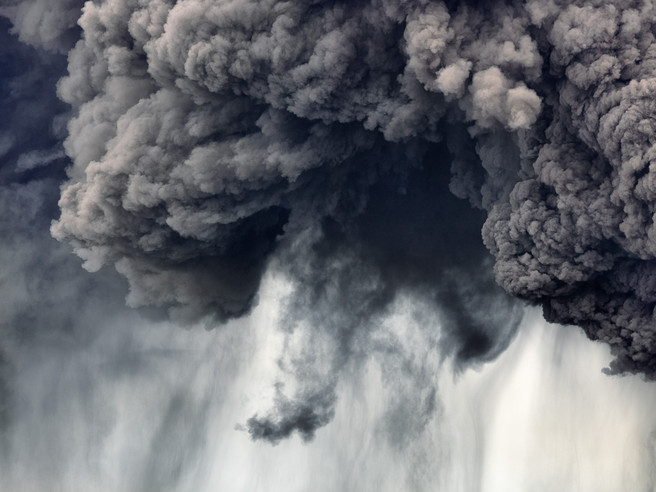 Tim: Yes. And did you, I mean did you use these, or submit them to libraries, etc?
Tim: Yes. And did you, I mean did you use these, or submit them to libraries, etc?
Hans: Yeah, I was trying to get them published in the National Geographic, but it didn’t work out. We had actually a very good story with this eruption and all kinds of volcanic stories about Iceland also and we also descended into an extinct magma chamber, I don’t have any pictures from there on my website but I can send you, it’s quite an amazing place called Þríhnúkagígur. We were lowered by a wire, they lowered us through the crater inside a hole in the ground, 130m vertical drop until you are able to stand on solid ground again, and then you’re inside a magma chamber which is big like a concert hall and you see the light coming up from the hole on the top and quite a fantastic place, we had this and together with the eruption shots and we were hoping to get a story in the National Geographic and they, I don’t know for some reason thought it wasn’t, they couldn’t, they didn't find any interesting things to tell with this, I don’t know what...
Tim: It was a European problem, it didn’t affect America
Hans: Yeah probably, I was amazed because I thought it was a very strong story and I think the pictures were ok but still they didn’t like it so, but I haven’t published it much now
Tim: Perhaps we could do an article on it some time?
Hans: Yeah could be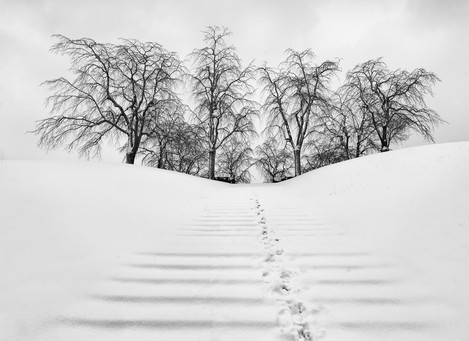 Tim: .. onto some of your black and white work, this woodland cemetery
Tim: .. onto some of your black and white work, this woodland cemetery
Hans: Yeah, also quite nearby where I live, it’s a big cemetery where all the graves are, they are inside a forest, a pine forest, and quite a nice place. Of course a sad place. It’s called the Grove of Contemplation or Grove of Remembrance it’s called and there are stairs to the top there of the hill and I think there are elm trees or something growing up there and this was a day where there was very power, strong, how do you say, heavy snowfall and you see one person had walked up there before me, you know, so I took this picture, it was very monochrome, didn’t have any colours, so I prefer to do it in black and white
Tim: Now when you’re shooting with black and white, do you think about black and white when you’re out shooting?
Hans: It happens, yes
Tim: Yeah, so do you basically see a picture and think this will work in black and white and the process it alter for that
Hans: Yes, yeah
Tim: Because if you presumably you shot black and white film when you..
Hans: Oh yeah, half of my job, half my work is black and white it has always been but as you know it’s not easy to sell your black and white work
Tim: No
Hans: Only option is to sell it as art and it’s a very limited, very limited possibilities for that here in Sweden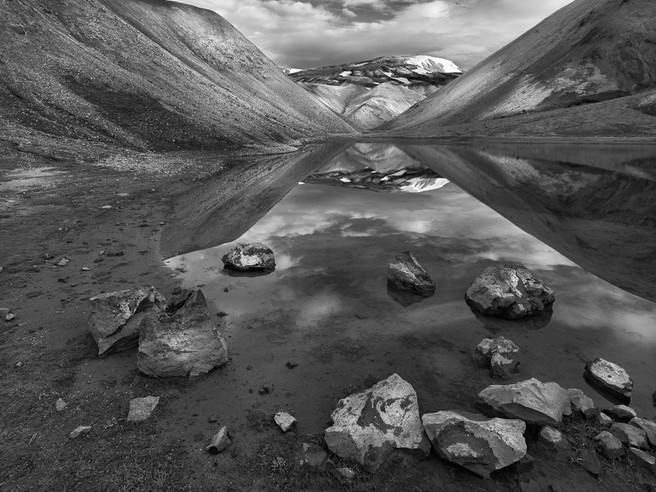 Tim: Just posting another one which is a reflection from Landmannalaugar. In particular, on this shot, how much processing you do with your black and white shots, do you work them quite hard or are they fairly straight out of the cmaera?
Tim: Just posting another one which is a reflection from Landmannalaugar. In particular, on this shot, how much processing you do with your black and white shots, do you work them quite hard or are they fairly straight out of the cmaera?
Hans: In this particular shot it’s made from two exposures, I didn’t focus blend here but I did an extra -2 for the background for the snow lit, for the sunlit mountain in the background was a lot brighter than the rest of the scene, so I blended that in and then I used a, a what’s called a SilverFX and I kind of evened out the contrast here between the background and foreground. Maybe I overdid it a little but here, I don’t know but, I probably brightened up the foreground at least to stop
Tim: Your opinion on SilverFX?
Hans: I think it’s quite nice actually and you can add a local contrast there as well and you can use different kind of colour filters
Tim: So you would use SilverFX over Photoshop?
Hans: Oh yes, of course, I don’t think Photoshop is very good for black and white, not at all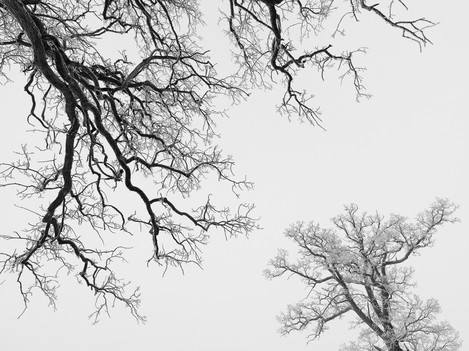 Tim: Here’s another black and white, which struck my eye when I was browsing through, as a very graphic shot
Tim: Here’s another black and white, which struck my eye when I was browsing through, as a very graphic shot
Hans: It’s also just south of Stockholm, one of these days with mist, I mean really misty conditions and -15 I think
Tim: Yes
Hans: ...and I was shooting both black and white and colour this day, I mean doing the processing the pictures both black and white and colour, but is very graphical and it didn’t have much colour either whereas the other oak shots had light a pinkish typical mid-winter colour, you know, when the sun is very low and you have a combination of red sun and you have the blue shadows, you can get like a pinkish colour
Tim: Wonderful contrast, yes. I suppose another one to ask about processing would be this shot of the leaves
Hans: Oh yeah, this is 5 different focussings from the first to the last and everyone was at f/22 because it was very demanding
Tim: So these are very small then?
Hans: Yeah, I don’t know the English name of this plant but, it was right after a rain storm, rain weather
Tim: How do you blend those when you’ve got your ... ?
Hans: I use a software called Helicon Phocus, I wouldn’t be able to do this manually, not at all, it’s too complicated
Tim: It’s not layers is it, it’s very comprehensive?
Hans: No, it’s not like an ideal tilt plain here where you could .... yeah.. so this would be too difficult
Tim: So does Helicon work immediately, I mean you put the photographs in or do you have to do manual work afterwards?
Hans: Most of the times it works perfectly and this time I have not done anything after that you know, yeah. I think I did this first in colour and used the Helicon Phocus and then I used the SilverFX to turn it into black and white
Tim: The toning's very nice
Hans: ...and I think I toned it manually by adding a few percent of red and yellow I think
Tim: Yes
Hans: Yeah
Tim: And was this on the Hasselblad again?
Hans: Yes with a 120 micro ..... and this is extremely sharp you know, I have never made a big print of this but it would be interesting to see this like a 40” print or something from this would be extremely full of details
Tim: How do you print your pictures?
Hans: I don’t use any printer for the moment, I used to use an HP but I threw that away, I wasn’t happy with it because it didn’t reproduce red colours and orange colours very well,
Tim: So you're sending your prints off at the moment?
Hans: Yeah I do all my printing at a professional lab, they are using LightJet, both for colour and black and white. Have you made any comparison between an inkjet and a LightJet in terms of tonal range?
Tim: I’m interested in doing this, there is an article we’d like to do for a future issues because I haven’t seen any comparisons and the test data that I’ve seen which is when people look at colour gamut say LightJets have a smaller colour range and the inkjets have a lot broader range but it’s a very different look
Hans: But still I think it’s an obvious difference in character, the LightJet looks 3D, it’s extremely good looking
Tim: Absolutely, it seems like the colour’s actually in, you’re looking into the material rather than the surface so
Hans: It’s fantastic, I think it’s a night and day in difference
Tim: But you say that you’re getting the black and white done on baryta paper as well?
Hans: I have never seen better prints made from an enlarger
Tim: We’ll have to get a reference off you for that to include in our tests because I know there’s only a couple of places in the UK that do anything like that and I don’t think they use baryta paper
Hans: Oh it’s just fantastic, it blows you away you know and they’re using warm tone type of baryta paper now to get a little bit duo tone feeling you know
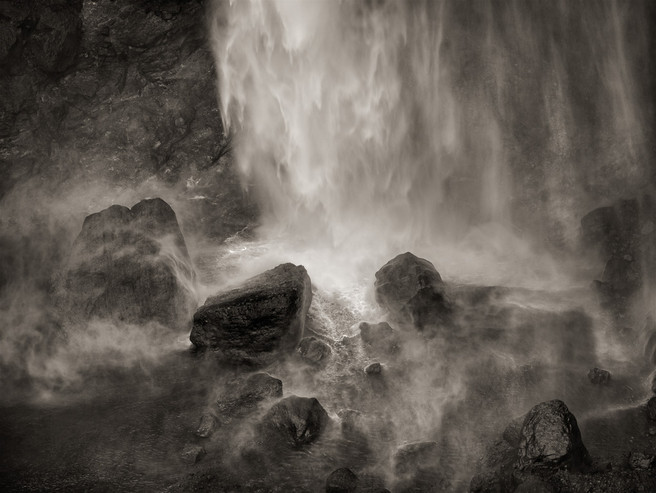 Tim: One more black and white and then – this is a waterfall shot, very popular subject in Iceland
Tim: One more black and white and then – this is a waterfall shot, very popular subject in Iceland
Hans: Yeah it’s a huge waterfall called Háifoss, its 122 m tall
Tim: Yes
Hans: ... and I have left out the most of the fall, I just concentrated on the bottom and think that’s a philosophy I have quite often, I like to go more abstract instead of showing the whole of the waterfall, in this case I’ve concentrated just a part of it and that goes for a lot of my photography, I very often exclude skies and mountain peaks and, in your imagination you can make this waterfall even higher than it is in reality, not maybe not this picture but in other pictures of let’s say mountain walls, etc, you can get a feeling that the wall is even higher if you don’t have the sky the ending of the wall on the top you know
Tim: Yes gives you a sense of scale and power, once you can’t make out features of a mountain then it has no scale
Hans: But here it was a challenge, the whiteness of the water in combination with the dark shadows of the rocks
Tim: Huge contrast range
Hans: A huge contrast range but its shot in one frame so
Tim: Hasselblad again?
Hans: Yeah, Hasselblad again, I think it’s 210mm
Tim: And your, the effect here looks like there’s an enormous amount of wind coming out of the bottom of that
Hans: All these huge waterfalls they generate a lot of wind because it’s a lot of moves the air when it, when the water plunges, of course it starts a, like a circulation of the air, so it’s like ....
Tim: So how do you, so presumably that’s all the water spray coming up, how do you keep the camera dry, and especially the lens dry?
Hans: Here I’m standing quite far away
Tim: Your standing on a ledge, are you?
Hans: I’m standing on a rim, in this waterfall plunges into a deep ravine (Tim: ok) and I’m standing probably 100-130-150 metres over the waterfall
Tim: The scale is quite difficult to tell then isn’t it ... ?
Hans: It’s quite wide in the base here, right across this is something like 50m or so
Tim: And you’ve had prints of this made in the baryta?
Hans: No I haven’t, I should have ... It’s very much in the style of Ansel Adams
Tim: .... do you prefer black and white or colour, you feel more natural when you are shooting one or the other?
Hans: If I could survive on black and white photography, I wouldn’t take one single colour photograph, I'm honest about that actually, it’s always like Ansel Adams said, looking at a colour print is like listening to a piano slightly out of tone, out of tune, out of tune. It’s always a hassle getting the colours right and you never get them right really, I think, I have huge problems with greens, greens are always too brilliant, in my opinion, I don’t know how to get rid to of the brilliance either. If you add magenta which is the complementary colour it becomes darker but it also becomes sort of brownish and you don’t want that either you want a deeper green which you cannot get easily
Tim: Yeah, I must admit that it is the colour that I think, well in film terms, every single film I’ve seen has a very, very different interpretation
Hans: Yeah and especially Velvia was too green it was like the box .....
Tim: all different films seem to have very different interpretations of green and digital still has issues with different sensors
Hans: Oh yes, I always have to do something with the greens you know, I’m not ending up satisfied all the times and I tried to make it darker, to get more flash in the green, more tonality, but it seems to kind of bleed, you know, and it was the same with Velvia, it was very green, in the end when I was shooting 4x5 and 8x10 I was using Kodak Ektachrome 100S because in my opinion it had a better green
Tim: Yeah I do have quite a lot of E100G, the later version of it, and it is a very lovely, neutral film.
Tim: In terms of black and white, which photographers do you think are, would you recommend somebody to look at if they were looking at developing a black and white approach? I mean I particularly am a big fan of Richard Sexton ... John Sexton
Hans: Yeah gorgeous
Tim: .... and Brett Weston
Hans: Yeah, Brett Weston, absolutely, I really like Sexton because he is very subtle in his work, he’s not flexing his biceps so much and he’s more like a poet with his camera, like Charlie Cramer. He is also a poet, and they’re good mates I think, and whereas a lot of American contemporary black and white photography is too much about using red filters on the skies etc. I don't like that. I don’t like black skies, I think it’s silly
Tim: An affectation
Hans: It’s the same problem as I have with too much colour saturation on colour photographs, I don’t like that at all either, it looks too artificial, I don’t think anybody will come up with the idea of over-saturating a human face in the post production, but in, with nature and landscapes it seems to have no limits
Tim: Yes, I wonder sometimes whether that’s a commentary on how familiar people are with what the landscape looks like
Hans: Yeah, I think very few people have a no connection and when they see a colourful photograph, “Oh, that’s impressive”, they think because they have no relation to nature, but it looks like a cartoon to me
Tim: Well thank you for that, is there any final message you would like to pass on... covered?
Hans: .. I think my message would be shoot more round where you live, round the corner of your house and explore the magical possibilities of things around your feet, you know, a lot of small wonders that can be stronger than any mountain range in hallelujah light you know
Tim: It was quite a pleasant surprise to see that a lot of the pictures I’d picked were from your local area
Hans: I’m happy for that. I just saw a fantastic picture of a frosty cow on your website from what’s her name, from Samantha?
Tim: Ah Samantha Gibbons, yes
Hans: .... and I even wrote a comment on there, I think pictures like this are ones the pictures that are making me very happy when I see them - small wonders
Tim: Yes
Hans: Yeah
Tim: ...and whereabouts do you see your photography going in the next few years or decade or whatever, have you got an idea?
Hans: I’m working on two books for the moment, one on the Arctic and one on Iceland, so that’s what I have in the pipeline for the moment
Tim: That will keep you busy
Hans: I have no dates when they will be published but hopefully the Arctic book will come out 2014
Tim: Excellent
Hans: Iceland, I’m not in a hurry with that, because I like Iceland so much I want to have an excuse for going there
Tim: To just keep on shooting it, yes
Hans: And it will be probably the most important work I will do as a photographer, so I'm not in a hurry
Tim: I should probably ask you about what workshops you’ve got coming up for people because I’m sure people will be interested
Hans: I have a workshop in June on Iceland but that’s sold out
Tim: Have you got any more after that?
Hans: I have one in Abisko in September. We announced the workshop in Svalbard but we cancelled that one because we didn’t have enough interest in it so it was cancelled but there will be workshops ..............
Tim: Well thank you very much Hans - we'll link to your website with the workshops at the end of the article.

